NETHERLANDS
History

History
Cities in NETHERLANDS
| Amsterdam | Eindhoven | Maastricht |
| Rotterdam | The hague |
History
Prehistory and Antiquity
Palaeolithic (c. 250,000 - 8,300 BC)
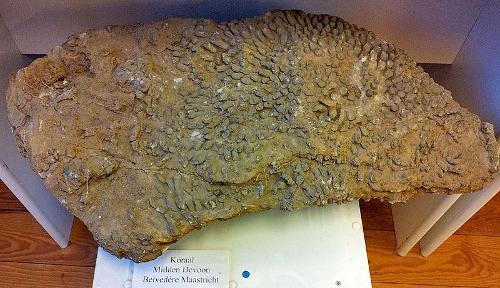 Devonian fossil coral from the Belvédère quarry in Maastricht, NetherlandsPhoto: Kleon 3 CC 4.0 no changes made
Devonian fossil coral from the Belvédère quarry in Maastricht, NetherlandsPhoto: Kleon 3 CC 4.0 no changes made
The earliest traces of human presence date from a warm phase in the climate about 250,000 years ago. A number of consecutive settlements of Homo erectus were found under loess and river deposits and in the Belvédère quarry near Maastricht. The traces show that the oldest known inhabitants of the Netherlands hunted elephants, rhinos and deer, among other things.
At Rhenen, sand quarries yielded finds of approximately 200,000 to 150,000 years old. Settlements along the Meuse date back to around 12,500 years ago, while hunter-gatherers hunted reindeer on the cover sands north of the great rivers. In addition to hunting, fishing and collecting some fruits and tubers were important in this period.
Mesolithic (c. 8300-5300 BC)
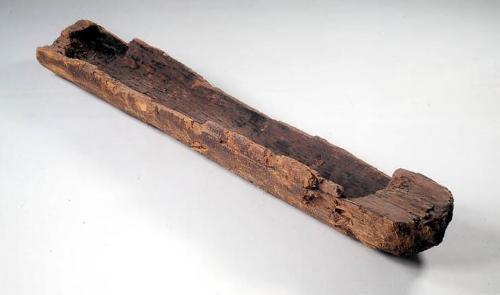 Canoe van Pesse in the Drenthe MuseumPhoto: Drents Museum CC 3.0 Unported no changes made
Canoe van Pesse in the Drenthe MuseumPhoto: Drents Museum CC 3.0 Unported no changes made
During the Mesolithic, the temperature rose relatively quickly, causing the sea and ground water levels to rise. This made the plant and animal world much more varied, which had repercussions on humans. Far more food sources arose besides big game hunting: fishing and bird catching and collecting nuts, fruits and crustaceans. People moved around less, the population grew and lived longer in one place in primitive settlements.
Around 6500 BC. Based on the use of materials and the occurrence of certain types of flint tips, the Netherlands is roughly divided into two cultural areas. At the time, the Northern Netherlands formed the Nordwest Kreis together with the Northern German lowlands and the Southern Netherlands, together with the Belgian Kempen and the German Rhineland, formed part of the Rhine Basin Kreis. The Drenthe museum has probably the oldest surviving vessel in the world: the Pesse canoe.
Neolithic (c. 5300-2100 BC)
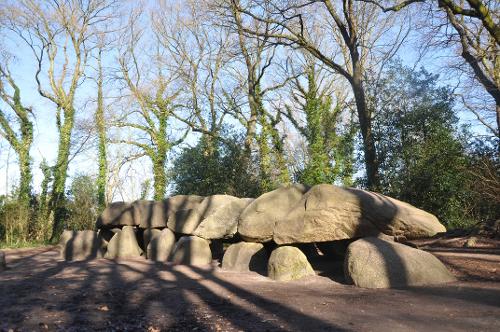 Hunebed Borger, NetherlandsPhoto: Public domain
Hunebed Borger, NetherlandsPhoto: Public domain
About 5300 BC. In the Netherlands, the changes of the Neolithic revolution become noticeable for the first time through the band ceramic, typically decorated pottery and the earliest example of ceramics in the Netherlands. The band ceramics preferably settled on the easy-to-work loess and a number of settlement sites were excavated in South Limburg. The Mesolithic culture remained prevalent above the great rivers.
Around 4400 BC. the Neolithic way of life was introduced in the Northern Netherlands by people of the Danish and Northern German Swifterbant culture. Many traces of these hunting and fishing farmers have been found in the IJsselmeer polders and in Overijssel and further in the Maas and Rijnmond area and in Drenthe and Gelderland.
About 3500 BC. again two distinct cultural areas can be distinguished. The funnel beaker culture (ca. 3400-2850 BC) became known thanks to the hunebeds in particular in the province of Drenthe and at the same time scattered populations of the Vlaardingen culture lived near the large rivers (ca.
Flint mining was already practiced in South Limburg at the time of the Michelsberg culture and initially the extraction took place in opencast mining and later also in shafts.
During the late Neolithic, his dead were increasingly buried under burial mounds. The late Neolithic in the Netherlands begins with the emergence of the so-called battle hammer or battle ax cultures (c. 2900 BC) and the earliest Dutch representative of this is the foot cup culture (c. Chr. developed the bell beaker culture (ca. 2700-2100 BC), which is found in almost all of the Netherlands. In 1991, (remains of) skeletons of twenty people from around 2600 BC. found it. They were buried in a squat position, the men with their heads to the west and the women with their heads to the east.
Bronze Age (c. 2100-800 BC)
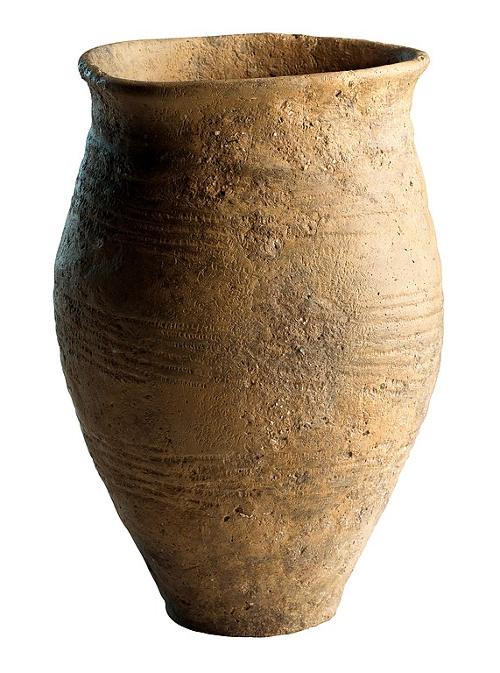 Winding wire pot, NetherlandsPhoto: Public domain
Winding wire pot, NetherlandsPhoto: Public domain
The transition from Neolithic to Bronze Age was gradual. The winding wire pottery from the very beginning of the Bronze Age (ca. 2100-1800 BC) is in keeping with the late bell beaker pottery in terms of decoration and technique. The death deliveries still took place under burial mounds, but now mostly without additional items, the objects that were given to the deceased. Stone tools remained in use for a long time.
Copper objects were already used during the late Neolithic and in the early Bronze Age bronze was increasingly used as a raw material for tools and later also for jewelry. Throughout the Bronze Age, there have been regional bronze industries in the Netherlands. For the raw materials they depended on supplies from elsewhere, and this was done through barter trade, for example.
In the Middle Bronze Age (ca. 1800-1200 BC) the Hilversum culture existed in the Central and South Netherlands and the Elp culture in the Northern Netherlands. Some archaeologists distinguish a third cultural unit in West Friesland at this time (Hoogkarspel), which extends to about 800 BC.
The late Bronze Age (c. 1200-800 BC) is dominated by the urn fields occurring throughout the Netherlands. The Urnfield Period (c. 1200-500 BC) extends into the Middle Iron Age and these Urnfields probably originated in the 13th century BC. in Central Europe and penetrated through, among other things, a changing religious awareness in the Netherlands.
Iron Age (ca.800-550 BC)
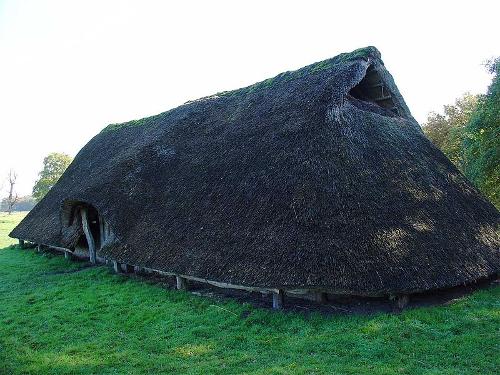 Reconstructed Iron Age farm on the Reijntjesveld in the NetherlandsPhoto: Gouwenaar in the public domain
Reconstructed Iron Age farm on the Reijntjesveld in the NetherlandsPhoto: Gouwenaar in the public domain
Remarkable remains from the early Iron Age (ca. 800-550 BC) are the so-called royal tombs in the south of the Netherlands. These royal tombs contain prestigious accessories, such as bronze buckets imported from Italy, richly decorated swords, and in Wijchen even parts of a four-wheeled show car.
Because of the sharp contrast with the very austere burials from the urnfields, it is thought that these may be the burials of a regional elite who were buried in the Celtic style.
The European bronze trade soon disappeared and was replaced by a local iron production and as a result the contacts of the southern Netherlands with the Central European cultural area were also broken.
There was a threat of overpopulation in the Northern Netherlands and the inhabitants of the Hondsrug in Drenthe were forced to colonize the coastal region. The residents of West Friesland were probably added to this, who had to leave their swampy living area as a result of the expansion of the raised bog. They settled on the dry marshes off the coast of Friesland and Groningen, where the fertile soil turned out to be suitable for growing crops. When the water started to rise again, people no longer retreated to the higher grounds. Instead, the residence was raised with the help of manure and clay, creating the first mounds.
The terp farmers also increasingly switched to livestock farming. Thus, after some time, a new culture emerged in this isolated area of mounds, associated with the name Frisians. During the Iron Age, on the higher sandy soils, especially in Drenthe, "celtic fields" were created on a large scale, fields surrounded by low walls.
In the late Iron Age (c. 250-12 BC) the population of the Netherlands increased sharply and the south returned to close to the Central European cultural area. This was expressed in an increasing number of valuable imported objects. In the Betuwe, the area where the Batavians live, they probably even used their own coinage. Glass bracelets and jewelery were produced in the eastern river area.
In 57 BC. the legions of Gaius Julius Caesar penetrated into the southern Netherlands. However, the Romans met strong opposition and withdrew. In 12 BC. the Roman armies returned, now definitively. Their arrival established the first written historical sources dealing with these areas.
Middle Ages
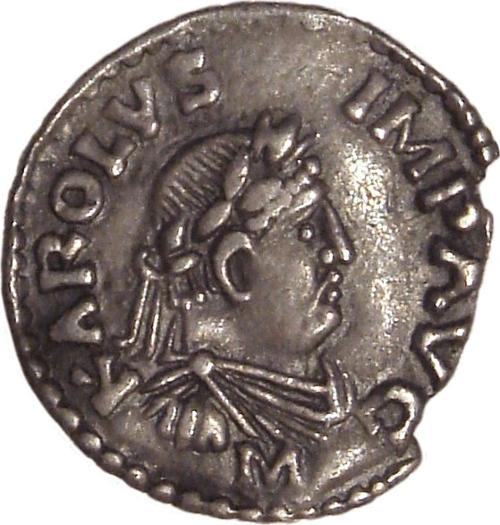 Coin depicting Charlemagne, NetherlandsPhoto: Public domain
Coin depicting Charlemagne, NetherlandsPhoto: Public domain
When the Romans (57 BC) first arrived, the later Dutch territory was inhabited by Celts and Germans. The influence of the Romans on these peoples was not so great because the distance from Rome was too great and the resistance of the native peoples was too strong. Moreover, due to internal struggles in the Roman Empire, conquering this corner of the empire was not a priority. In the 5th to the 7th centuries, the Dutch territory was divided by three population groups: in the north to the IJssel and along the west coast to present-day Zeeland, the Frisians dominated; in the east, between the rivers Ems and Rhine, the Saxons and in the south the Franks, united in one kingdom by the Merovingian family. In the 7th century, the northern part of the Dutch territory fell under the so-called "hofmeiers", overseers of the Merovingian court. The south, meanwhile, was Christianized after the conversion of Clovis I.
The Carolingian Empire, which lasted from 751 to 925, expanded to the north and south. Charlemagne established his authority over the Frisians in 785 and over the Saxons in 804. Charlemagne died in 814 and under his son Louis the Pious and his successors the power of the Carolingians weakened visibly. The Normans took advantage of this disintegration and invaded the empire.
After the Treaty of Verdun in 843, the empire was divided into three parts: the West Franconian, the East Franconian Empire and the Middle Franconian Empire to which most of the Netherlands was added. In 855 the Middle Franconian Empire was divided into three again. The Netherlands then belonged to the northern part and were added to the East Franconian or German Empire in 925, where it would formally form part until 1648 (Peace of Münster). The German emperor remained nominally liege lord of the Dutch territories, but in fact had no more than a ceremonial function.
In the Middle Ages, between the second half of the 9th and the end of the 14th century, a large number of landowners saw the opportunity to expand their territory and establish more or less powerful "loan states". The counts of Holland and Zeeland and the dukes of Gelre and Brabant became the most powerful feudal princes. The area that now includes approximately Belgium, the Netherlands and Luxembourg, the Low Countries, consisted of virtually autonomous regions.
The main administrative units were then:
The County of Flanders, later expanded with Rijksvlaanderen.
The Duchy of Brabant, with Leuven as its center.
The diocese of Utrecht.
The County of Holland, which later conquered Zeeland.
Gelre or Gelderland, which only became a unit in the 12th century.
The counties of Namur, Luxembourg and Hainaut, which was united with Holland, Zeeland and Friesland from 1300.
Friesland had no lord and was no more than a federation of peasant republics.
At that time, Dutch Limburg was located east of the Maas and Belgian Limburg was in the county of Loon, which was annexed by the principality of Liège in 1366. Liège was a separate state until the French Revolution.
Burgundian period
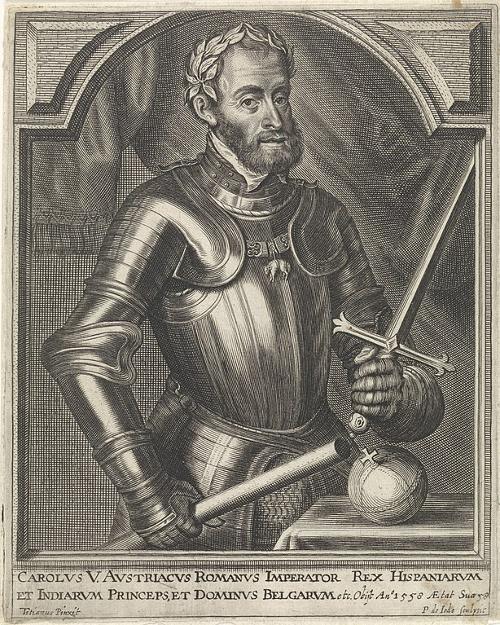 Charles V, NetherlandsPhoto: Public domain
Charles V, NetherlandsPhoto: Public domain
In 1369 Philip the Bold, son of the French king and duke of Burgundy, married Margaret of Male, the heiress of the Flemish count. In 1384 Philip became count of Flanders and Artois. The grandson of Philip the Bold, Philip the Good, started the dynastic unification of the Netherlands. He bought Namur and inherited Brabant and Limburg in 1430.
In 1433 he succeeded in dethroning Jacoba van Bavaria, Countess of Holland, Zeeland and Henegouwen. The Burgundian conquest and marriage policy resulted in the formation of a powerful middle empire, which stretched from Burgundy to Groningen, around 1470. Philip also established an advisory body, the States General, which first met in Bruges in 1464.
Philip's son, Charles the Bold, died in 1477 but had no male successor. Louis XI of France took advantage of this by taking some areas.
Charles the Bold's daughter, Mary of Burgundy, also married Maximilian I, Archduke of Austria and later German Emperor, in 1477. As a result, the Netherlands were included in the system of the Habsburg royal family and thus prevented the French from taking more areas. Maximilian was succeeded by his son Philip the Fair, who married again the Spanish princess Joanna of Aragon. In 1500 Charles V was born from this marriage, who later became king of Spain, Naples and Sicily. He also inherited the Austrian possessions from the Habsburgs and eventually became emperor of the Holy Roman Empire. Charles V was also concerned about the unification of the Netherlands and in the period 1523-1543 successively acquired Friesland, Utrecht and Overijssel, Groningen and Drenthe and Gelderland. Except for the Principality of Liège, the entire present-day territory of Belgium, the Netherlands and Luxembourg was in the hands of Charles V and this area was often referred to as the Seventeen Provinces.
In 1555 Charles abdicated and his brother Ferdinand became Emperor of the Holy Roman Empire. His son Philip II became a prince in the Netherlands and also king of Spain.
The uprising against Spain
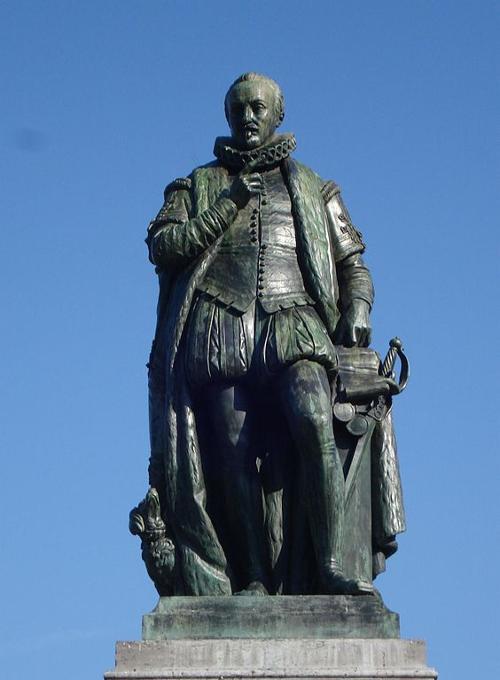 Statue William of Orange, NetherlandsPhoto: F Eveleens CC 3.0 Unported no changes made
Statue William of Orange, NetherlandsPhoto: F Eveleens CC 3.0 Unported no changes made
In the meantime, Protestantism had penetrated the Low Countries from Germany (Martin Luther) and France (Calvin) and the Catholic Charles V had introduced the Royal Inquisition, which had already condemned and executed more than 2,000 Protestants during his reign. Philip II turned even more vehemently against Protestantism, which he also regarded as a threat to the constitutional unity of his empire. The resistance of the nobility and the common people against the Inquisition and a phenomenon like the "edicts", which were issued against Protestantism, took on increasing proportions. In 1566, about 400 nobles presented a petition to the governor, Margaret of Parma, asking, among other things, to stop the Inquisition. The common people expressed themselves by destroying statues, other objects of religious art and liturgical utensils in churches and monasteries on a large scale within three weeks. This uproar was called the "Iconoclasm".
Philip decided to punish the insurrection severely and called in the Duke of Alva, who with an army of 10,000 men marched to the Netherlands. Alva founded the "Council of Strokes", known by the people as the Blood Council. More than a thousand people were sentenced to death by this council, including Egmont, the governor of Flanders, who was beheaded.
William of Orange was at that time stadtholder of Holland, Zeeland and Utrecht and from his county of Nassau in Germany organized the military resistance against the Spanish reign of terror. In 1568 he crossed the Meuse towards Brussels: the Eighty Years' War had begun!
However, this attempt and another in 1572 failed. A group of so-called "watergeuzen" was more successful and occupied several Dutch and Zeeland ports, after which the population of Holland and Zeeland rallied en masse behind the liberators. William of Orange also left for Holland, to continue fighting from there. By mutinous Spanish troops in the Southern Netherlands, the South also turned against the robbing and murdering Spaniards. In 1576 representatives of all official regions came together in Ghent and reached an agreement, the Pacification of Ghent. They made a number of demands to the Spanish including the immediate withdrawal of the Spanish troops and general amnesty. However, the unanimity was short-lived and in 1578 the Catholic Walloon regions united in a Catholic league, the Union of Atrecht. Margaret of Parma's son, Farnese, was recognized as the new governor. In 1579 the Union of Utrecht was founded, which consisted of Holland, Zeeland, Utrecht, Gelderland and the main Flemish and Brabant cities. This mainly military union was directed against the violence used by Farnese. The two unions were also a precursor to the definitive division between the Northern and Southern Netherlands.
Until 1589, Farnese conquered several cities and areas, except Holland, Zeeland, Utrecht, Friesland and part of Gelderland. After the "Fall of Antwerp", the conquest by the Spaniards and the closure of the Scheldt by the Northern Netherlands, the separation of the Netherlands was final and the Republic of the Seven Provinces (1588) was born.
In 1590, William of Orange's son, Prince Maurice, counterattacked and conquered all areas above the major rivers. In 1598 Philip II ceded the Netherlands to his daughter Isabella, who would later marry Albert of Austria. This Albrecht was forced by lack of money to stop fighting and to sign the Twelve Years' Truce (1609-1621). The Spanish king recognized the United Provinces as free and sovereign provinces.
In 1621 the war was resumed and Maurits's successor, Prince Frederik Hendrik, conquered a number of cities in North Brabant, Limburg and Zeeuws-Vlaanderen. Eventually, war fatigue in both the Northern and Southern Netherlands became so great that peace was signed in 1648. At the Peace of Münster, the Republic of the Seven Provinces was recognized by Spain and the Southern Netherlands remained Spanish.
Flowering time of the Republic: The Golden Age
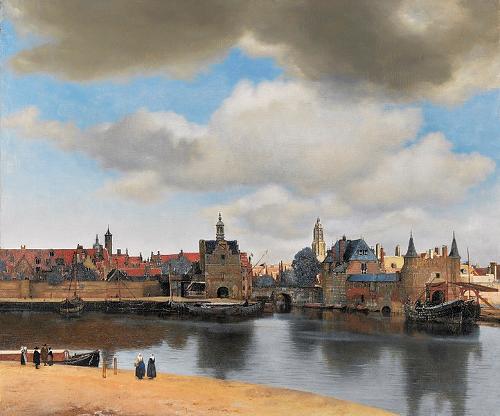 View of Delft by Johannes Vermeer, NetherlandsPhoto:Maueitshuis in the public domain
View of Delft by Johannes Vermeer, NetherlandsPhoto:Maueitshuis in the public domain
Economically, the Republic of the Seven United Netherlands prospered in the seventeenth century. In the slipstream of the economic boom, the arts and sciences also flourished. For example, in 1575 the University of Leiden was founded and Rembrandt, Jan Steen, Frans Hals and Johannes Vermeer painted beautiful paintings.
Before the uprising, Antwerp was the link between the products from the Spanish and Portuguese colonies and Northern Europe. After the Fall of Antwerp, many merchants from the South moved to the Republic in the North. With their knowledge and capital, the products were now imported from Africa, Asia and America themselves. The organization of overseas trade and its management gradually came almost entirely in the hands of the Dutch and their companies, the Dutch East India Company (VOC: 1602) and the West Indian Company (WIC: 1621). These companies had extensive powers and were entitled, for example, to make alliances and maintain an army and a fleet. They also carried out the administration, administration of justice and law enforcement in the Dutch possessions overseas.
At that time, the Republic laid the foundation for the Dutch possessions in South Africa and the later colonies of the East Indies (now: Indonesia) and West Indies (now: Suriname and the Antilles).
After the peace, Frederik Hendrik's successor, his son William II, came into serious conflict with the Dutch regents about the unwanted discharge of the troops. William II won the conflict but died in 1650. Because his successor had only just been born and the States did not appoint a new stadtholder, the first stadtholderless era began, which would last until 1672. It may be clear that during this period the power of the Dutch regents was very great. The leading statesman in that period was council pensionary Johan de Witt. Before he was appointed in 1653, the First Anglo-Dutch War broke out, which was won by England in 1654. De Witt strengthened the fleet after the defeat and managed to win the Second Anglo-Dutch War (1665-1667) under the leadership of the genius Michiel de Ruyter .
In those years the army of Louis XIV, the Sun King, advanced towards the Southern Netherlands. With the help of the Republic and its allies they managed to prevent the annexation of the Southern Netherlands by the French. In the so-called "disaster year" of 1672, the Republic was directly attacked by Louis, together with the English, and in the east by Münster and Cologne. The east and south of the Republic were occupied up to the Dutch Waterline. However, the people revolted and the young Prince of Orange, William III, was proclaimed stadtholder and commander of the army. William III received help in that battle from Spain, the German Emperor and Brandenburg and managed to expel the enemy from the Republic as early as 1673. Peace was made with England, Münster and Cologne in 1674 and the Peace of Nijmegen with France in 1678.
William III became the personification of the resistance against French expansionism in Europe. His position was reinforced when he ascended the English throne in 1688. In that same year the Nine Years' War broke out, in which the Netherlands and England managed to defeat Louis XIV. Not much later, the same fighting cocks faced each other again in the War of the Spanish Succession (1702-1713), which dealt with the succession in Spain. In 1702 William III died and again no new stadtholder was appointed, the start of the second stadtholderless era that would last until 1747. However, the War of the Spanish Succession had cost a lot of money and the position of the Republic as a great power came under heavy pressure. The second stadholderless era was characterized by a lack of leadership and the Republic was completely on the leash of the English. France and England also surpassed the Republic economically. In 1741, the Republic became involved in the War of the Austrian Succession (1741-1748) and in 1747 French troops invaded Staats territory. The people again called in the help of the Oranges and Willem van Nassau-Dietz, stadtholder of Friesland, Drenthe and Gelderland became stadtholder of all regions and captain and admiral general of the Union.
Under the influence of the Enlightenment, ideas were blown over from France and democratic ideas gained more and more influence on the political system. The successors of William III, William IV and William V, however, did not care much about the wishes of the people. An anti-Orange-minded movement soon emerged, the patriots. In the period 1785 to 1787, the patriots even controlled the government of Holland and Utrecht.
In 1780, the Republic, as an ally of France, was again at war with England, the Fourth English War. The Netherlands suffered one defeat after another and in the end the battle ended in a draw and this added fuel to the fire for the patriots. In 1787, Princess Wilhelmina, sister of the Prussian king and husband of the stadtholder, was arrested by the patriots. In response, Prussian troops invaded the Republic in September 1787. As a result, the Oranges took over again everywhere and many patriots fled to France.
In 1793 the Republic was declared war by the French Republic and in January 1795 the Republic was overrun by French troops.
The French era (1795-1813)
 Louis Napoleon, King of HollandPhoto: JoJan CC 3.0 Unported no changes made
Louis Napoleon, King of HollandPhoto: JoJan CC 3.0 Unported no changes made
Together with the French troops, the emigrated patriots also returned and took control everywhere again. On May 16, 1795, a treaty was already signed and the Batavian Republic, as the country henceforth called itself, was recognized as an independent state, but was in fact just a French puppet state. In 1806 the Batavian Republic was proclaimed the "Kingdom of Holland" with the brother of Napoleon Bonaparte, Louis Napoleon, as king. On July 13, 1810 it was annexed to the French Empire. However, Napoleon suffered major defeats in Russia and at Leipzig in 1813. This kept the hope of a quick liberation from the French in the Netherlands. Under the leadership of Gijsbert Karel van Hogendorp, preparations were made for independence.
On November 21, 1813, the French troops began to withdraw and on November 30, the Prince of Orange, the son of William V, arrived in Scheveningen, called to the Netherlands by Van Hogendorp. On December 2, 1813, he was inaugurated as the sovereign prince King William I. In March 1814 the first Constitution was established and it had already been decided that the Southern Netherlands would be united with the Northern Netherlands. All this was arranged at the Congress of Vienna in 1814.
After Napoleon's resignation on April 6, 1814, the last French troops left the Netherlands. However, Napoleon returned in 1815, but after the lost battle of Waterloo, the French returned to France for good. On August 24 the new Constitution for the United Kingdom was established and in 1816 most of the colonies were returned to the Netherlands.
The Netherlands and Belgium
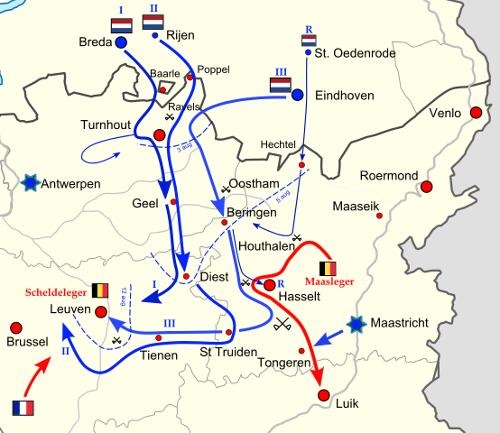 Army Movements During the Ten Day Campaign August 2-12, 1831Photo: Hans Erren CC 3.0 Unported no changes made
Army Movements During the Ten Day Campaign August 2-12, 1831Photo: Hans Erren CC 3.0 Unported no changes made
The new Constitution created strong royal authority. The right to vote was limited to a small group of privileged citizens and there was no question of parties in a modern sense. Only for legislation was the king bound to the cooperation of the States General, the Senate and the House of Representatives. By means of a number of language decisions, among other things, William I of the United Netherlands tried to create a real unity. Dutch should become the official language in the Flemish provinces, but the French bourgeoisie was strongly against this. Moreover, the autocratic rule of William I was not so enamored anyway. The government also tried to subject the churches to its supervision and in 1828 the Catholics and liberals in the south united in a union against the government.
In 1830 the July Revolution broke out in France, which led to the Belgian Revolution in the southern Netherlands, after which Belgium seceded from the Netherlands. In 1839 this divorce became final. The Personal Union with Luxembourg continued to exist until 1890 and the province of Limburg remained a member of the German Confederation as a duchy until 1866.
A revision of the 1815 Constitution was of course necessary again and in 1840 the new Constitution was established. In 1840 William I abdicated and was succeeded by his eldest son, William II. A liberal constitutional reform was not yet possible, but in 1848, impressed by the revolutions in France and Germany, the king himself took the initiative for a constitutional reform. In the spirit of the great liberal Thorbecke, full ministerial responsibility was introduced, the powers of the States General were greatly expanded (including the right of amendment and interpellation) and direct elections to the House of Representatives were introduced.
In 1849 Willem II was succeeded by his son Willem III. Due to a constitutional crisis that lasted from 1866 to 1868, the Netherlands came to a full parliamentary form of government and the personal will of the king had less and less influence on the policy of the government. Willem III dissolved the Chamber twice after it had rejected ministerial policy. And when a new Chamber also ruled against it a third time, there was only one option left: dissolution of the government. The principle that a government that lacks the confidence of parliament should resign had thus prevailed.
King William III died in 1890 and was succeeded by his daughter Wilhelmina, who was under regency by her mother, Queen Emma, until 1898. Around the turn of the century, the Netherlands experienced a flourishing period in many areas, including in trade, industry, shipping and agriculture. Culture and science were also at a high level with six Nobel Prize winners up to 1913. Only militarily the Netherlands remained weak.
World War I and Interwar period
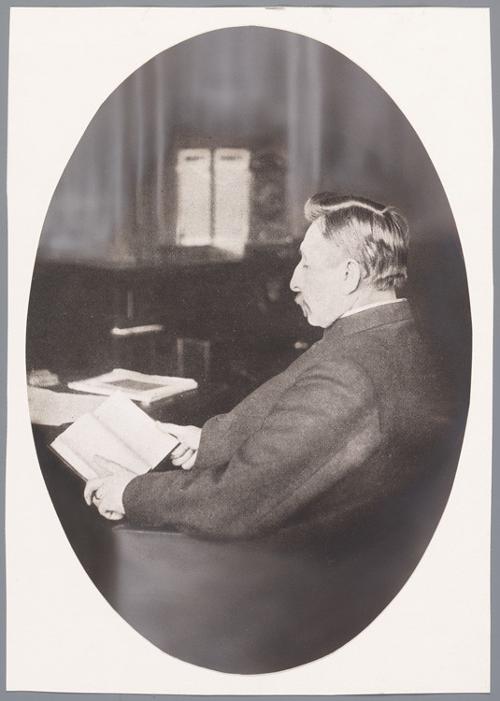 Pieter Jelles Troelstra, NetherlandsPhoto: Unknown (CC BY 2.0) no changes made
Pieter Jelles Troelstra, NetherlandsPhoto: Unknown (CC BY 2.0) no changes made
This military weakness was not yet punished in the First World War because the liberal Cort van der Linden cabinet managed to maintain the neutrality of the Netherlands. Just before the end of the war, the Netherlands was startled by a socialist revolution attempt, Troelstra's "mistake". The strong negative reactions from the royalist part of the population caused the attempt to fail.
In 1922 women's suffrage was enshrined in the constitution. Furthermore, it was quite boring in the Netherlands in the interwar period. In politics the confessional were and remained in power and society was divided into clear blocks or "pillars". The balance of forces between the pillars hardly changed and extreme groups such as the communists did not really gain a foothold in parliament. The leaders of the major parties also managed to easily maintain authority within their parties.
Even the great economic crisis and revolutionary developments in Europe in the 1930s were experienced by citizens and workers with a great deal of passivity, only the Jordan revolt was an exception. Even in the last years before the war, the Dutch population continued to rely blindly on the seemingly untouchable neutrality.
War and occupation
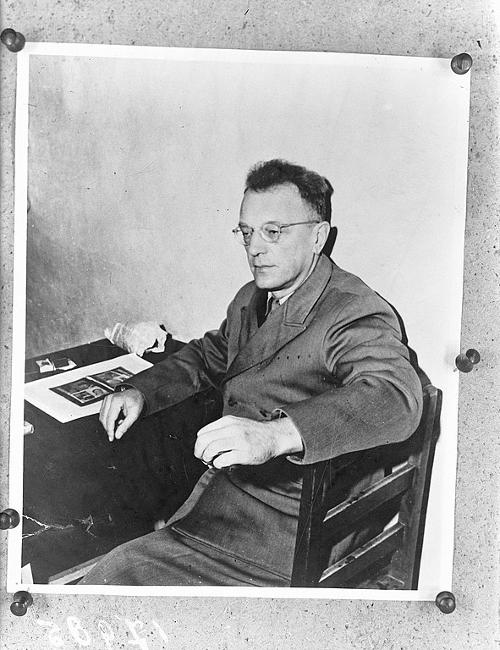 Arthur Seyss-Inquart, NetherlandsPhoto: Anefo in the public domain
Arthur Seyss-Inquart, NetherlandsPhoto: Anefo in the public domain
On May 10, 1940 the German troops invaded the Netherlands, five days later the country was largely occupied and on May 14 the Dutch army capitulated. The Dutch government had already left the country and was leading from London out of the Dutch resistance outside occupied territory and preparing the liberation of the Netherlands. London also retained supreme supervision over the overseas territories. The most important area, the Dutch East Indies, was lost to the Japanese after the fall of Java on 9 March 1942.
Meanwhile, a difficult time began for the Netherlands. The German occupiers, under Reich Commissioner Arthur Seyss-Inquart since May 28, 1940, regarded the country not only as spoils of war to be used exhaustively for general German warfare (including forced labor in Germany), but also as one of the areas in which the Nazi ideology willingly or unwillingly had to be introduced and become predominant. Strong support for the small NSB (National Socialist Movement), which hastily established itself as a helper for Germany, and the establishment of all kinds of new National Socialist institutions and organizations (including the SS Netherlands) had to promote this. Other political parties were already permanently banned on July 5, 1941. Nevertheless, the occupying forces did not succeed in gaining a large following for National Socialism.
On a social level, the consequences were much more serious when the Germans also began to persecute the Jews in the Netherlands and, through deportation and mass murder in concentration camps, managed to exterminate most of the Jewish population in the Netherlands (104,000 dead out of a total of 140,000). Three major protest strikes were held during the war (the February strike in Amsterdam against the deportation of Jews in 1941, the May strike in 1943 and the railway strike from September 1944). A minority actively resisted, such as helping the Jews and other victims of the regime, organizing the so-called hiding place, underground press, espionage and sabotage and preparing for military aid for the liberation.
From a political point of view it was important that political plans for the future were drawn up in this illegal movement, which were disseminated to a wider audience via the underground press. These were the most radical plans, which after the liberation in two stages - namely the area south of the rivers in September-November 1944 and the rest of the Netherlands in April and May 1945 - turned out to have little chance of success.
Political developments after 1945 and reconstruction
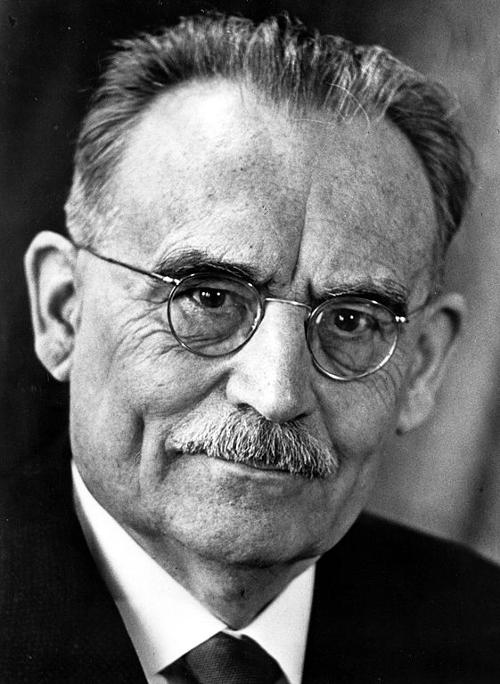 Willem Drees, NetherlandsPhoto: Rijksoverheid.nl in the public domain
Willem Drees, NetherlandsPhoto: Rijksoverheid.nl in the public domain
Willem Schermerhorn of the Dutch People's Movement and Willem Drees of the SDAP formed the first post-war cabinet and on June 24, 1945, the Schermerhorn-Drees government was launched.
Representatives of RKSP, SDAP, CHU, Liberal State Party and the VDB took part in this so-called "national cabinet for recovery and renewal". The task was to initiate the production process, repair the housing stock, reduce black trade and control wages and prices. The first one started with the money purge of Minister of Finance Lieftinck. The system of Special Justice and Purification, which had already been developed in London, was also adapted because of the necessary political cleansing.
The pre-war compartmentalization in party politics largely continued to exist and real political renewal has not yet been achieved. The ARP, CHU, SGP and CPN returned immediately after the war, while the RKSP only changed its name to Catholic People's Party (KVP). Importantly, the VDB was largely absorbed by the newly established Labor Party (PvdA), founded in February 1946 and resulting from the SDAP.
The first elections were held on 17 May 1946 and the "breakthrough" hoped by the PvdA failed. The PvdA even received a lower percentage of the vote than the groups assembled in this party had obtained before the war. The confessional parties maintained themselves well and the communists of the CPN won big. The KVP wanted to cooperate with the PvdA and in July the Beel cabinet was established, consisting largely of representatives of the PvdA and KVP. The establishment of Drees' old-age insurance was important in this period. Domestic politics was almost entirely dominated by the Indonesian question. The police actions in particular caused a great deal of commotion nationally and internationally.
Partly as a result of Indonesian politics, the PvdA member Oud and a number of supporters had left the PvdA in October 1947 and joined the Stikker-led Freedom Party, which was called the People's Party for Freedom and Democracy (VVD). received. After the elections in 1948, the Drees cabinet was formed in July 1948. Even now the situation in Indonesia was high on the political agenda again. On December 27, 1949 the transfer of sovereignty of the Indies takes place, with the exception of New Guinea.
In 1949, the Netherlands also joined the North Atlantic Treaty Organization (NATO). On June 25, 1952, elections again take place in which the PvdA became the largest party. Drees again became leader of a cabinet that this time consisted of the PvdA, KVP, ARP and CHU. This combination also came about after the elections of June 13, 1956, and Drees became prime minister again.
This cabinet lasted just over two years after all socialist ministers resigned in December 1958 following a conflict with the chamber. That is why early elections were held on 12 March 1959, which were won by the VVD, while the PvdA, CPN, CHU and ARP lost many votes. The PvdA and the CPN lost many votes to a new party, the Pacifist-Socialist Party (PSP).
The De Quay cabinet, without the PvdA, soon had to deal with the problems surrounding New Guinea, which was claimed by Indonesia. Under American pressure, the Dutch government concluded an agreement in August 1962 whereby the Netherlands transferred the administration of western New Guinea to a special body of the United Nations. It was also agreed that the Papuans would be able to vote on their political future in a popular vote before the end of 1969.
The sixties
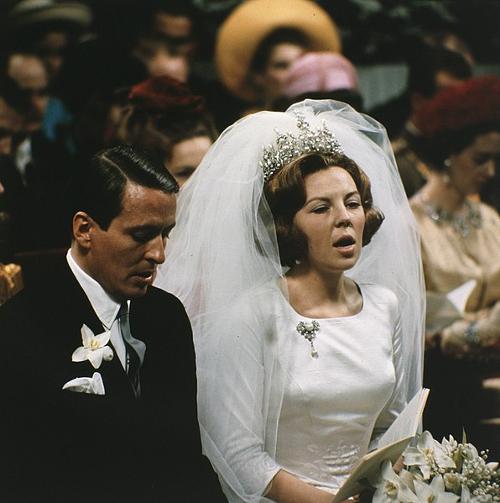 Marriage Beatrix and Claus, NetherlandsPhoto: Anefo in the public domain
Marriage Beatrix and Claus, NetherlandsPhoto: Anefo in the public domain
The elections of May 15, 1963 caused a lot of loss of votes for the PvdA and the VVD, while the PSP doubled its number of seats. New in the House of Representatives were the Reformed Political Association (GPV) with 1 seat and the Peasant Party with 3 seats. Again a VVD-KVP cabinet was formed under the leadership of Marijnen. Difficult issues in this cabinet period were in the field of wage policy, the radio and television system and the complications surrounding the transition of faith and the marriage of Princess Irene to the Spaniard Juan Carlos of Bourbon.
Disagreements about the future of the radio and television system ran so high that the government resigned in February 1965. The subsequent Cals cabinet consisted of KVP, PvdA and ARP. This cabinet had to deal with the problems surrounding the marriage of Princess Beatrix and the German Claus von Amsberg. The wedding ceremony in Amsterdam was marred by smoke bombs and riots. Cals's policy was mainly aimed at expanding the collective facilities. Its financing led to fierce criticism from the KVP, Cals' party. On the "night of Schmelzer" (October 13-14, 1966) a motion was passed for better coverage of government expenditure. Among other things, a large part of the KVP faction voted in favor of the motion and the Cals cabinet then submitted its resignation.
In the early elections of February 15, 1967, the PvdA and the KVP lost and the newcomer D'66 (now: D66) won seven seats in the House of Representatives.
Piet de Jong composed a cabinet of KVP, ARP, CHU and VVD. The problems of this cabinet were mainly in the socio-economic area. The introduction of VAT (value added tax) on January 1, 1969 led to large price increases and a price freeze in April of that year. A new pay law also led to major problems with the Lower House. Already in February 1968 the KVP lost four MPs who formed their own faction. The Political Party Radikalen (PPR) was founded in April with a number of dissenters from the ARP.
In April 1970, part of the right wing of the PvdA split off from the party, and the Democratic Socialists '70 party was founded (DS'70). This party became the big winner of the elections of April 28, 1971 with 8 seats. The old coalition did not achieve a majority and cooperation with one of the parties of the left was excluded because PvdA, D'66 and PPR had entered the elections with a joint program, had formed a "shadow cabinet" and rejected post-election formation negotiations. In addition, the PvdA congress had passed a resolution in 1969 in which cooperation with the KVP was excluded, unless this party would break with the De Jong cabinet after all.
The seventies
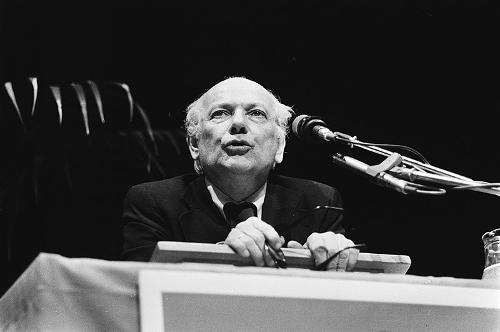 Joop den Uyl, NetherlandsPhoto: Rob Bogaerts / Anefo in the public domain
Joop den Uyl, NetherlandsPhoto: Rob Bogaerts / Anefo in the public domain
In the end, ARP party leader Biesheuvel succeeded in forming a cabinet consisting of representatives of KVP, ARP, CHU, VVD and DS'70. This cabinet had to deal with the possible pardon of the "Three of Breda", German war criminals who were serving a life sentence in Breda. In the end, after much commotion in the Lower House and among the population, they were not pardoned. Economically, the Netherlands suffered greatly from high inflation. On July 17, 1972 DS'70 left the government and early elections were called again. The big winner of the elections was the VVD and the PvdA and PPR also made a profit.
After a lengthy formation, the Den Uyl cabinet (PvdA, PPR, D'66, KVP and ARP) was established that preached the distribution of power, knowledge and income as its motto.
The worldwide oil crisis in 1973 posed major problems for this cabinet. While it was still possible to control wages and prices, which enabled inflation to be reduced, unemployment rose sharply. A delicate problem was the Lockheed affair, which allegedly involved Prince Bernhard, the husband of the former Queen Juliana. During this cabinet period, the former colony of Suriname became independent. The cabinet resigned in February 1977 due to internal disagreements over land policy.
In 1976 the three confessional parties KVP, CHU and ARP decided to participate in the elections of May 25, 1977 in a federative context as a Christian Democratic Appeal (CDA), after which it was transformed into a political party in 1980. The elections were won by the PvdA and the VVD, followed by the longest cabinet formation in Dutch parliamentary history: 208 days. It would eventually become a CDA-VVD cabinet led by the CDAer Dries van Agt. This cabinet also faced a lot of economic headwinds. A global economic crisis resulted in more than 400,000 unemployed people and a growing budget deficit. On top of this problem can be added the resignation of the Ministers of Defense and Finance.
The discussions in the chamber and in the country about the introduction of the neutron bomb and the stationing of cruise missiles on Dutch territory caused much social unrest. On April 30, 1980, Queen Beatrix was crowned in Amsterdam, and serious riots took place now as well.
The eighties
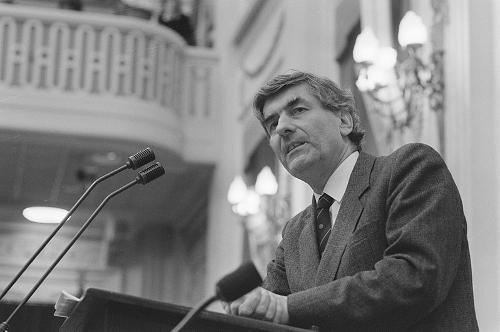 Ruud Lubbers, NetherlandsPhoto: Rob Croes/Anefo in the public domain
Ruud Lubbers, NetherlandsPhoto: Rob Croes/Anefo in the public domain
The big winner of the 1981 election was D'66. The CDA and the VVD lost the absolute majority, but due to the great loss of the PvdA, the CDA remained the largest party. The new government consisted of the CDA, PvdA and D'66, with Prime Minister Dries van Agt and Deputy Prime Minister Joop den Uyl of the PvdA. Due to major financial problems, the PvdA dropped out within a year and early elections were called.
The big winner was the VVD led by Ed Nijpels and there was a majority of CDA and VVD. This cabinet was headed by CDAer Ruud Lubbers, who pursued a stringent austerity policy. The cabinet ran into problems because of the parliamentary inquiry following the RSV affair, which cost the VVD many voters in the 1986 elections. Due to the great profit of the CDA, the CDA / VVD combination was once again able to form a government, although the VVD had less input than the CDA due to the loss of votes. It was remarkable that the CPN disappeared from the room after 68 years.
This cabinet succeeded in reducing the funding deficit and unemployment. On the other hand, there were many affairs that cost several ministers and state secretaries, especially the VVD. In 1989 the VVD got into an internal crisis of authority that was lost by the then leader Voorhoeve, after which he dropped the cabinet.
The VVD suffered heavy losses in the early elections in 1989. Despite this, the CDA / VVD coalition retained a small majority, but the CDA chose to work with the PvdA. For the third time a cabinet came under the leadership of Ruud Lubbers, this time as Deputy Prime Minister Wim Kok, former trade unionist and successor to the illustrious Joop den Uyl.
The nineties
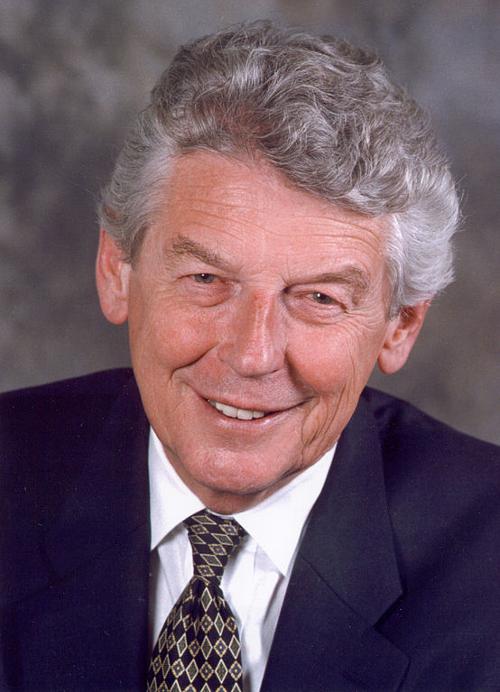 Wim Kok, NetherlandsPhoto: Rijksoverheid.nl in the public domain
Wim Kok, NetherlandsPhoto: Rijksoverheid.nl in the public domain
In the second half of 1991, the Netherlands was president of the European Community. The Netherlands failed to establish a truce in the war in Yugoslavia. The Dutch proposal to create a European Political Union was also far from making it. However, at the Maastricht Summit in December 1991, the Maastricht Treaty was adopted, resulting in the creation of the European Union on 1 November 1993.
After the 1994 elections, the Kok cabinet was formed, with the PvdA, the VVD and D66 next to it. That meant that there had been no confessional party in government since 1918 and that liberals ruled the Social Democrats for the first time in 42 years. The spearheads of this first so-called "purple" cabinet were administrative and political renewal, the recovery of unemployment and the flexibilisation of the labor market. The Kok cabinet was particularly successful from an economic point of view, and unemployment had been greatly reduced within a number of years. The social security system was thoroughly cut back.
In 1995-1996, a further parliamentary inquiry into the methods of investigation in the police caused a stir again and within the EU, especially from the French side, there was a growing criticism of what they saw as long-suffering drugs policy.
The events in and around the Bosnian Muslim enclave Srebrenica in the summer of 1995 were a black page in the history of the armed forces. Dutch UN soldiers were forced to watch helplessly as the enclave was overrun by Bosnian Serbs, after which thousands of Muslims were murdered. .
Under the Dutch Presidency, the Treaty of Amsterdam had only one important agreement: the so-called Stability Pact, in which the budget requirements that countries had to meet if they wanted to join the European Monetary Union (EMU).
Relations with Suriname remained poor, among other things due to the issue by the Dutch Public Prosecution Service in June 1997 of an international arrest warrant against the former army chief Desi Bouterse for his alleged involvement in drug smuggling.
In February 1997, swine fever was diagnosed in the Netherlands for the first time since 1989. The plague spread rapidly despite measures taken by the Ministry of Agriculture, a total of more than 400 pig farms were affected and millions of pigs had to be slaughtered. The swine fever prompted the Minister of Agriculture Van Aartsen, also in the interests of the environment, to rigorously cut down on the still growing pig population.
Parliamentary elections were held on 6 May 1998, with the PvdA, VVD and Green Left becoming the big winners and the CDA and D66 the big losers.
A second "purple" Kok cabinet was established with roughly the same policy because the so-called polder model was also increasingly recognized internationally. The parliamentary inquiry into the handling of the Bijlmer disaster, the crash of an Israeli Buoying on two flats in the Bijlmermeer in 1992, also caused a sensation.
Various sides have repeatedly called for a parliamentary inquiry into the state of affairs surrounding the fall of the Bosnian enclave of Srebrenica. So far, research has been done only by the National Institute for War Documentation. After the presentation of the report in 2002, it was decided to hold a parliamentary inquiry in the second half of 2002.
In May 1999, the cabinet appeared to fall due to the bill on a corrective legislative referendum, a wish of D66 and that citizens should be able to block a bill after it has been accepted by the House of Representatives and the Senate. In February 1999, the House of Representatives approved an amendment to the constitution to allow for such a referendum. Subsequently, it turned out that the Senate did not find a majority in favor of the bill and D66 threatened with a cabinet crisis if the corrective referendum were rejected. However, the crisis was cemented and the outgoing cabinet was able to continue to rule.
Economically, the Netherlands was still doing well despite economic problems in Asia, Russia and Latin America. As in the previous three years, economic growth is expected to exceed 3%, according to the Central Plan Bureau (CPB). Registered unemployment fell by 6,000 every month and in April 2000, the Netherlands had fewer than 200,000 unemployed for the first time since 1980. Moreover, for the first time in 25 years, the national budget was closed in 1999 with a surplus of NLG 2 billion. In April 2000 this amount turned out to have risen to NLG 6 billion. The government stated that it would be spent on education and care, police and the environment, among other things.
In 1999 the Netherlands took part in the NATO air campaign over Serbia during the war in Kosovo.
21st century
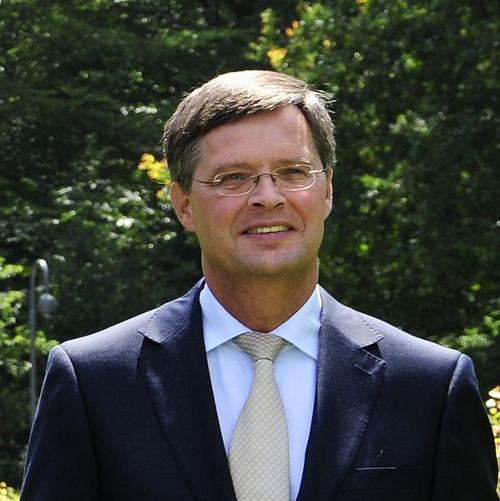 Jan Peter Balkenende, NetherlandsPhoto: Prime minister Rutte CC 2.0 Generic no changes made
Jan Peter Balkenende, NetherlandsPhoto: Prime minister Rutte CC 2.0 Generic no changes made
On January 1, 2002, the Dutch guilder was replaced by the euro, the common currency of a number of countries of the European Union.
In the nineties of the last century, the so-called "Liveable" parties emerged strongly, including in Hilversum led by Jan Nagel, a former PVDA politician. Nagel, among others, founded the national party Liveable Netherlands, which took part in the national elections in 2002. The popular Pim Fortuyn was brought in as the party leader. After a controversial interview in de Volkskrant, in which Fortuyn distanced himself from the party line, Fortuyn stepped up and founded his own party, the List Pim Fortuyn. In the polls before the elections it appeared that the LPF could count on 20 to 30 seats. On May 6, 2002, Pim Fortuyn was shot. A week later, elections to the Dutch parliament were held and the LPF gained 26 seats, making it the second party in the country.
A coalition was formed between CDA, VVD and newcomer LPF, which, however, would last less than 100 days. On October 16, 2002, it became clear that the cabinet would fall as a result of the continuous quarrel between two LPF ministers and the many internal problems in both the LPF parliamentary group and in the party.
As a result, elections were again held on January 22, 2003. The CDA narrowly remained the largest party. The Christian Democrats took 44 seats, one more than on May 15, 2002. The PvdA came in at 42 seats, a profit of 19. For the VVD the profit was limited: the liberals went from 24 to 28 seats.
A cabinet was formed of CDA, VVD and D66. This cabinet fell in the spring of 2006 and early elections were called which were held in November 2006.
After the early parliamentary elections of November 22, 2006, the CDA remained the largest fraction in the Lower House with 41 seats. The PvdA lost 9 seats to 33 seats. Jan Marijnissen's SP achieved a monster victory of 25 seats.
The VVD became the fourth party in the country with 22 seats. GroenLinks won seven seats, Geert Wilders' PVV nine, D66 three, the ChristenUnie six, the SGP two and the Party for the Animals two. List Five Fortuyn, the former LPF, which was good for eight seats in 2003, disappeared from the Chamber. One NL from Marco Pastors and the party from Nawijn also did not get any seats. From February 2007, Jan Peter Balkenende has been a coalition of CDA, PvdA and the ChristenUnie.
Geert Wilders' Freedom Party made a major advance in the polls in 2008/2009. Geert Wilders is being taken to court for inciting hatred against the Muslims. In June 2009, the Freedom Party of Wilders becomes the second party in the Netherlands in the European elections. In February 2010, the Balkenende cabinet will decide whether or not to extend the Dutch military force in Afghanistan. In June 2010 there will be elections with an unclear result. After an exciting and emotional party conference of the CDA (a third votes against an agreement to cooperate with the party of Geert Wilders)) in October 2010 the way seems to be cleared for a right-wing minority cabinet of the CDA and VVD with tolerance support from the PVV. The cabinet led by VVD leader Mark Rutte has been sworn in. The ministers appeared on the steps of Huis ten Bosch Palace in The Hague on Thursday afternoon 14 October 2010 at a quarter past one.
The Netherlands Antilles no longer exist in their current form since October 10, 2010. Since that date, Curacao and Sint Maarten have been independent countries within the kingdom. Bonaire, Sint Eustatius and Saba are now special municipalities of the Netherlands. In April 2012, the cabinet falls because Wilders withdraws the tolerance support. In the elections of September 2012, the VVD will be the largest party, closely followed by the PvdA. In November, a cabinet of VVD and PvdA will take office. This combination is supported by a majority in the second chamber, but does not have a majority in the first chamber.
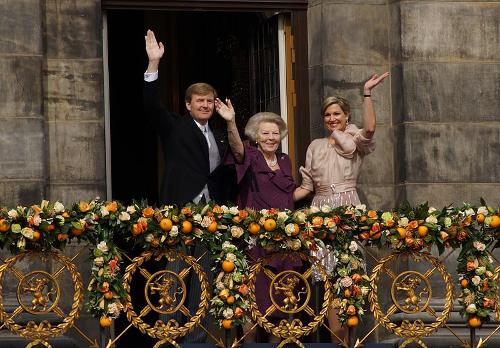 Jan Peter Balkenende, NetherlandsPhoto: Floris Looijesteijn CC 2.0 Generic no changes made
Jan Peter Balkenende, NetherlandsPhoto: Floris Looijesteijn CC 2.0 Generic no changes made
In April 2013 Willem-Alexander becomes king of the Netherlands. In 2013, the government must conclude various deals with the opposition to make reforms politically feasible. D66, CU and SGP in particular will receive the status of beloved opposition parties. The SP and the PVV continue to aggressively oppose government policy. At the end of 2013 and early 2014, the economic outlook appears to be improving slightly and the Netherlands is slowly emerging from the recession. In May 2014, Volkert van der Graaf, the murderer of Pim Fortuyn, is released on conditions after he has served two thirds of his sentence. In July 2014, the Netherlands is plunged into mourning after the shooting down of flight MH 17 over Eastern Ukraine, 298 victims were on board, including 194 Dutch. In March 2015, Minister Ivo Opstelten and State Secretary Fred Teeven step down due to deception of parliament (ticket affair). In 2015 and 2016 there was a lot of noise around the migrant crisis and the establishment of asylum seekers centers. In March 2017, on the eve of the elections, diplomatic tension arose between the Netherlands and Turkey due to the refusal of a Turkish minister who wanted to campaign in the Netherlands for a referendum that wants to give President Erdogan more power. The VVD emerged as the largest party in the elections, but the political landscape is very fragmented.
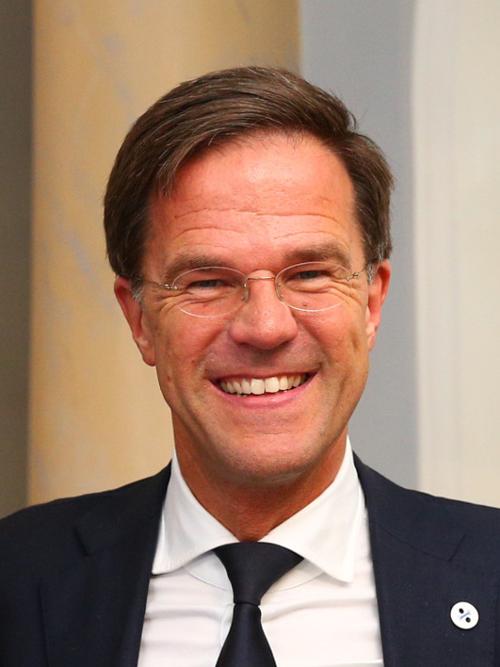 Mark Rutte, NetherlandsPhoto: EU2017EE Estonian Presidency CC 2.0 Generic no changes made
Mark Rutte, NetherlandsPhoto: EU2017EE Estonian Presidency CC 2.0 Generic no changes made
Only in October 2017, after a record formation, Rutte becomes prime minister of a cabinet of VVD, D'66, CDA and the Christenunie. In 2018 it has been decided to stop the extraction of natural gas in Groningen more quickly due to persistent earthquakes and many protests from the province of Groningen. In municipal elections, the local parties gain ground over the national parties. In September 2019, the lawyer Derk Wiersma, who defended a key witness, is murdered. This causes a great shock and is seen as an attack on the rule of law. The year 2020 is dominated by the Covid-19 (Corona) pandemic that is also severely affecting the Netherlands. Healthcare is under severe pressure and the economy is also cracking. The 2021 elections paint a diffused picture. The VVD remains the largest party, but Mark Rutte (already outgoing) comes under heavy pressure because of the allowances affair and the Pieter Omzicht issue. The VVD continues to support its leader and the formation of a new cabinet is under discussion. In January 2022, after a record-long formation, a new cabinet will take office consisting of the old coalition.
Sources
Haafkens, M. / Nederland
Gottmer
Harmans, G.L.M. / Nederland
Van Reemst
Metze, M. / De staat van Nederland
SUN
Ver Berkmoes, R. / Netherlands
Lonely Planet
CIA - World Factbook
BBC - Country Profiles
Last updated December 2025Copyright: Team The World of Info